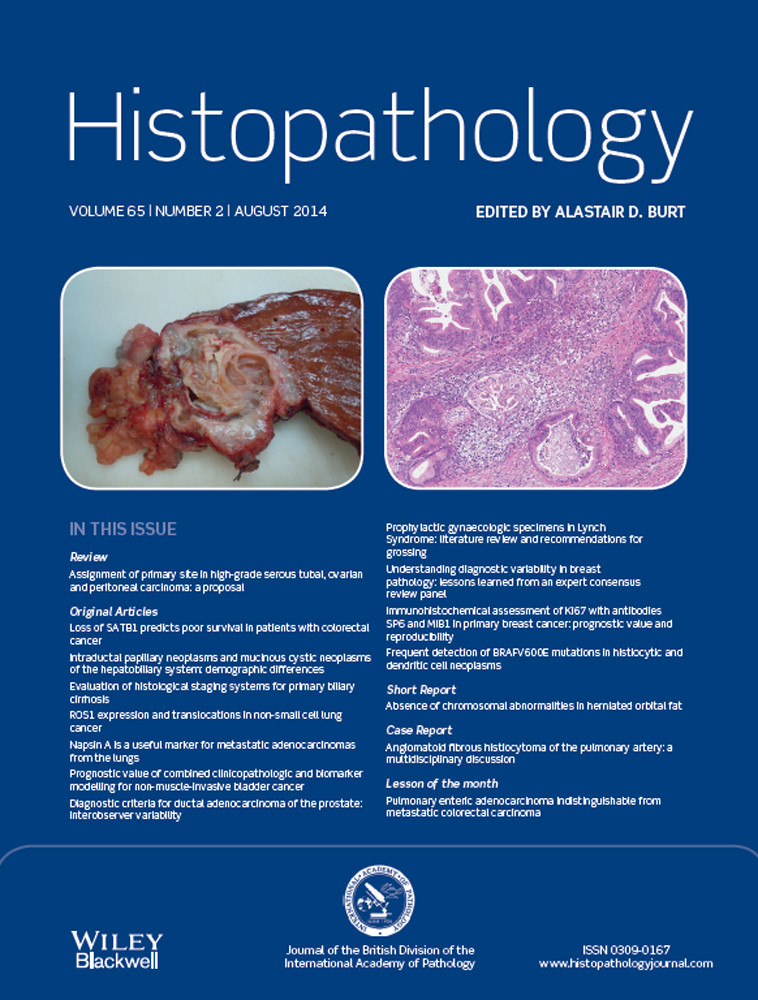Frequent detection of BRAFV600E mutations in histiocytic and dendritic cell neoplasms
Abstract
Aims
In this study, we examined BRAF mutation in a wide range of histiocytic and dendritic cell neoplasms and compared its detection rate in each disease group.
Methods and results
A total of 129 cases of histiocytic, dendritic cell and other related lesions were reviewed from the archives of 10 hospitals in Korea. The cases consisted of histiocytic sarcoma, follicular dendritic cell (FDC) sarcoma, interdigitating cell sarcoma, Langerhans cell histiocytosis (LCH), Langerhans cell sarcoma, blastic plasmacytoid dendritic cell neoplasm, acute monocytic leukaemia M5, giant cell tumour, xanthogranuloma, inflammatory myofibroblastic tumour and Rosai–Dorfman disease. BRAF mutation analysis was performed by Sanger sequencing and PNAcqPCR. All the detected mutations of BRAF were V600E. Histiocytic sarcoma exhibited the highest rate of BRAFV600E (62.5%, five of eight), followed by Langerhans cell tumours (25%, seven of 28), FDC sarcoma (18.5%, five of 27) and giant cell tumour (6.7%, two of 30). The other tumours did not harbour BRAF mutations. In histiocytic sarcoma, FDC sarcoma and LCH, there were no significant differences in clinical features between tumours containing BRAFV600E and those with BRAFwt.
Conclusions
BRAFV600E was not limited to LCH and was detected more frequently in histiocytic sarcoma. Our findings suggest that the BRAF pathway may contribute to the pathogenesis or malignant transformation of histiocytic and dendritic cell neoplasms.




